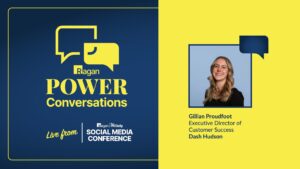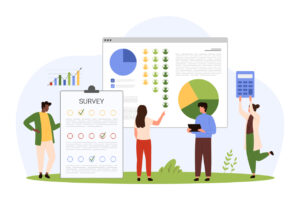Interpreting measurement outputs that offer multiple insights
The same data can tell different stories — here’s how comms pros can navigate them.

The role of a communicator has many facets. Your daily scope can include internal outreach, crafting messaging for leadership, and connecting strategic dots to keep your organization communicating consistently.
Although many comms pros will say they entered the field due to their proficiency with the written and spoken word, gathering, interpreting, and acting on data is an underutilized competency for many aspiring comms leaders.
Data can be as valuable a tool as any in telling a story. But within the raw words and numbers collected is a cluster of conclusions that might make it unclear which direction to go in.
Not to worry — there’s a roadmap you can follow to find out what determinations can be made from sometimes confounding data sets.
The power of preparation
A proper data measurement effort starts with the background legwork. Consider what you’re trying to gauge in your data measurement process, and be careful not to insert expected or desired outcomes into the mix of collection to avoid bias. But when done properly, well-collected data can serve as a goldmine of potential information for communicators to act on.
But that data analysis shouldn’t look the same every time you take a deep dive into the metrics. As Mary Elizabeth Germaine, partner and director of global analytics at Ketchum told us last year, the story you’re telling is going to be different, so looking at the data with a different perspective will help create a fuller perspective around the raw numbers and words.
“If you’re communicating with a super busy working mom, how you have to tell your story and where you have to tell that story is going to be very different than if you’re communicating to a 23-year-old who’s just out of school and entering the job market,” she explained. “What the things that are occupying their mind space, are two very, are very, very different.”
The north star for communicators should always be consideration of the people at the receiving end of a messaging effort. With the knowledge that those personas can differ widely, so can the ways to interpret data. That’s why the creation of employee personas can help comms pros so much in their jobs — when you’re able to customize your comms (or data collection for that matter), you can gain a better chance of driving the message home or uncovering narratives that might not be apparent on the surface.
The divergent road
So you’ve prepared your research, thought about what stories the data can tell, and you still find yourself at something of a crossroads. What’s a comms pro to do?
You’re a storyteller at heart, right? Realize that’s the hat to wear, and that at the day’s end, data tells a story. That’s true even if the same data set might tell more than one tale.
At Ragan’s Internal Communications Conference in Seattle last year, we gathered a panel of communicators and data experts to share how they pull stories from sometimes-daunting data sets.
During the conversation, the group shared the example of how a communicator might adopt different measurement and messaging tactics when evaluating an in-office team versus a hybrid team that work for the same organization. While data collection efforts might show these two distinct groups as similar on the surface, a deeper dive often reveals different conclusions.
For instance, if a comms team takes a pulse survey of both in-office and hybrid workers, and the data shows that both groups of employees desire more connection with leadership, it might seem at first like the raw data is pointing to one solution — more face time with leaders. But how that manifests itself can be very divergent. For the in-person team, the engagement initiative might center on in-person town halls, or even individual or small-team meetings with leaders.
Yet for the remote team, the conclusion might be a video series that addresses concerns voiced via a response portal, or virtual meetings that allow leaders to address questions. The paths that stem from the same data might come from the same place, but they are not identical.
When you see multiple stories that root from the same data set, remember to rely on your storytelling instincts. Consider the people, the organization, and the situation presented within the raw data. It takes a proper read of the background and meaning of the data to figure out where the narrative road might diverge and which fork to take.
Data without context is just information, but skilled communicators bring it to life.
Sean Devlin is an editor at Ragan Communications. In his spare time he enjoys Philly sports, a good pint and ’90s trivia night.







